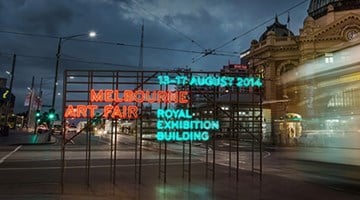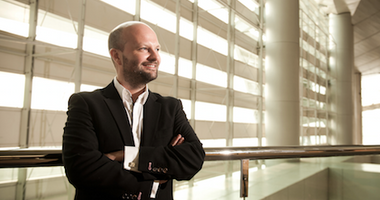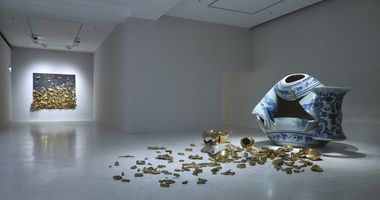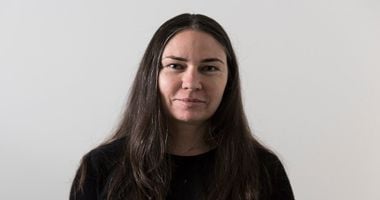Barry Keldoulis

Barry Keldoulis has more than three decades experience in the world of contemporary art.
Keldoulis started his career in New York where he worked as private secretary and chief of staff for Henry Geldzahler, Commissioner of Cultural Affairs for the City of New York, and the first curator of 20th century art at the Metropolitan Museum of Art.
After 15 years in America and Europe, Keldoulis returned to Australia where he worked at Djamu, a branch of the Australian Museum, dedicated to exhibiting its indigenous collections alongside contemporary indigenous art. He then entered the commercial world as senior manager, collections development for Sherman Galleries.
In 2003, he opened his own gallery to fill a gap in opportunities for young artists to exhibit. Artists from his stable are now represented in all the Australian state galleries and the National Gallery of Australia, and exhibit in museums and private galleries around the world.
A former member of the Melbourne Art Foundation Board for three years, Keldoulis has a deep engagement with the Australian contemporary art scene. In the lead up to the Melbourne Art Fair 2014, Keldoulis discusses how he came to be involved with art fairs, his view on the Australian art market and what we can expect from Melbourne Art Week.
I see art fairs as a physical manifestation of the Internet, and an example of growing international cultural interchange. The future of art fairs is healthy, but in an ever-changing world where the pace of change seems to be increasing, fairs will have to adapt too.
LTYou have a long association with Australian contemporary art. Tell us about how you came to be involved with Art Fairs Australia, the operators of the MAF?
BKBack in 2007 I was thinking that the time was ripe for a premium art fair in Asia, so I participated in the Hong Kong International Art Fair from its inception, and thus began my relationship with both Magnus Renfrew, the director, and Tim Etchells, the proprietor.
Over the course of the following years it had become obvious to me as a gallerist, that more and more of people's art dollars were being spent at fairs. Also the nature of fairs was changing with the times, morphing from basic stock shows to places of interaction and connection between the various branches of the art world.
So I was excited by the prospect of heading up Art Fairs Australia when the job was offered.
LTIn your role as CEO and Group Fairs Director of Art Fairs Australia, you oversee both Sydney Contemporary and the Melbourne Art Fair - Australia's youngest and oldest art fairs. What are the key differences between the fairs and what is your vision with respect to the future growth of the fairs?
BKSydney and Melbourne a very different cities, thank goodness, though it's not necessarily easy to put your finger on exactly how or why! So the fairs quite rightly have different flavours. Some of the difference is perhaps demonstrated in the venues; MAF is in a World Heritage listed building of Victorian grandeur, Sydney's Carriageworks is of the same era, but industrial with an award-winning contemporary architectural intervention.
But I don't want to get carried away about the differences. Both showcase the best of contemporary art from Australasia, our region, and beyond. Part of my job has been to get people not to think of Melbourne versus Sydney, but of the Australian art market as a whole. Part of the growth of the fairs lies not only in tapping into the large tranches of wealthy Australians not yet engaged with contemporary art, but also in exposing this part of the world as an interesting culture destination. Not just picturesque beaches populated by cute animals!
LTThe emergence of art fairs worldwide has been prolific. What do you see for the future of art fairs? And, what makes the MAF relevant both globally and locally?
BKI see art fairs as a physical manifestation of the Internet, and an example of growing international cultural interchange. Most good art still needs to be seen, to be experienced in the flesh to be fully appreciated; at a fair you can see work from your city and country, and from around the world. So the future of art fairs is healthy, but in an ever-changing world where the pace of change seems to be increasing, fairs will have to adapt too.
Australia is well positioned as a bridge between the Americas and Asia, and the fairs will exploit the benefits of our physical location.
LTWith the ongoing downturn in the Australian economy what are your observations about the current market for contemporary art in Australia?
BKI'm not sure who told you that there is an ongoing downturn in the Australian economy, as we haven't gone into recession since the early 1990s! There has been some political argy-bargy (to call it instability would be insulting to places with real problems) which has contributed to a hesitancy in the market, but many galleries report that the last six months have been amongst the best ever. As evidenced by the exponential rise in visitor numbers to museums and art spaces, there is a growing engagement with contemporary art in Australia, and that will translate into the market.
The Melbourne Art Fair is 25 years old, and comes from a time when the focus was pretty much solely on the fair. Now the fair is the centrepiece of a program that engages with the cultural life the city, enlivening it for visitors and locals alike.
LTThe 2014 edition of the MAF will see the introduction of new exhibition sectors that focus on cutting-edge, emerging and new media artists. Tell us about this?
BKThe new sectors are demonstrations of the adaptability of the fairs, and are innovations that reflect growth and changes in the wider art scene. MAF Video, like it's Sydney counterpart last year, is a recognition of the fact that Australia has for sometime had the most developed domestic market (that is into the home environment) for moving image work.
As a gallerist of over 10 years, a third of my sales were of video work. And it is a medium that more and more artists are choosing to express themselves, so it can't be ignored! Also, performance art is undergoing something of a resurgence. As a medium provoking thought around issues of public/private and artist/audience, it will be represented in MAF Edge. And although one doesn't want to promote an unhealthy obsession with youth, MAF Platform is an inexpensive avenue open to young galleries to bring emerging artists to the fair.
LTAre there any other new developments we can look forward to?
BKPerhaps the other major development has been the expansion of the Public and Collector Programs. The Melbourne Art Fair is 25 years old, and comes from a time when the focus was pretty much solely on the fair. Now the fair is the centrepiece of a program that engages with the cultural life the city, enlivening it for visitors and locals alike.
We're partnering with all the major institutions with events far and wide; from the plenary of lectures and forums put together by Melbourne University's Nikos Papastergiadis, right next door to the Royal Exhibition Building at the Melbourne Museum, to the Tarrawarra Biennial in the Yarra Valley, there is over 80 events to stimulate the eye and mind, and quench the thirst (literally).
LTMelbourne Art Week is integral to the success of the fair and includes an extensive program of events, exhibitions, projects and educational programming. What are some of the highlights we can look forward to?
BKThe week kicks off with Pearl Lam's key note address on the Monday night. Subsequent highlights include curator and director led tours of partner institutions.
For example Heide Museum of Modern Art with Jason Smith, National Gallery of Victoria with Max Delany and Maggie Finch, Basil Sellers Art Prize artists in conversation with Ian Potter Director Kelly Gellatly, Exhibition Floor Talk with David Rosetzky hosted by ACMI curator Fiona Trigg, private viewing of their exhibitions with Linden Director, Melinda Martin and exhibition curator Yhonnie Scarce, to name a few.
As well as private and corporate collection tours, (Naomi Milgrom Private Collection at the Sportsgirl/Sussan Headquarters, Lyon Housemuseum Private Collection Tour with Corbett Lyon, Proclaim: Generations of Gertrude, with Emma Crimmings, Creative Director of Gertrude Contemporary).
I'm hoping to get time to go behind the scenes at the Ian Potter Museum of Art's contemporary conservation tour. There are artists talks and studio visits too numerous to mention here! May I suggest readers visit the website to get an idea of the breadth and depth of activities!
LTWhat are your top picks for MAF 2014?
BKThe vernissage is traditionally one of the highlights of Melbourne's social as well as arts calendars, and this year we are inviting all the participating artists and more as our guests, to make it a true Celebration of Living Artists. It will bring together all the disparate elements of the art world for an extraordinary evening of discovery, discourse and general bonhomie!
And, well, it's hard for me to play favourites. But with all the talk about what's new and different, we shouldn't forget that the solid base for all of this is the best of Australasia's galleries, who will be putting their best feet forward, and I can't wait to see what they have on show! —[O]














